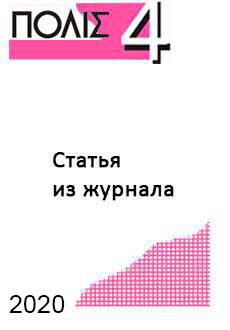Online shop of "Polis. Political Studies" Journal
We in the world, the world in us
Lebedeva M.M. New World Order: Parameters and Possible Contours. – Polis. Political Studies. 2020. No. 4. P. 24-35. (In Russ.).
Free!
world order, world politics, Westphalian system, system of international (interstate) relations, political organization of the world, transformation of the political organization of the world, liberal world order.
The article discusses approaches to understanding the world order. Most researchers, as well as practitioners, proceed from the fact that, in order to overcome the growing chaos of the modern world, it is necessary to form a new world order. The world order is usually understood as a configuration of the balance of power between the most powerful states. The article argues that understanding the world order through this prism does not meet modern realities. It is shown, instead, that the accepted organization of global politics (the Westphalian system, the system of interstate relations, the political systems of a number of states) is currently undergoing a general transformation, which is the essence of changing the world order. Another assumption a number of studies make is the non-distinction between the Westphalian system and the system of interstate (international) relations. The article demonstrates the importance of distinguishing between these two systems. On the one hand, the Westphalian system promotes a set of certain principles; on the other, international relations can be viewed as a configuration of the balance of interstate relations. The issue of a liberal world order is also being discussed. It is highlighted that a number of studies associate the liberal world order with the United States and, in general, with Western countries, but it is argued that such a statement is not entirely correct. The article shows that, although the West is significantly building up a modern liberal world order through many methods, the totality of a number of principles and institutions that make up this order is, nevertheless, generally accepted by the international community. The main features of the new world order are determined. It is noted that, at the present moment, there is a tendency to establish a polycentric world; however, such a world is led not just by its centers of power, but also by other states, as well as non-state actors. At the same time, a number of problems arise due to the interaction and decision-making of a large number of heterogeneous actors. Nevertheless, it is assumed that the new world order will be built on a multilateral and multilevel basis with extensive network communication. Scenarios for the formation of a new world order are discussed.
 English
English Русский
Русский

Reviews
There are no reviews yet.